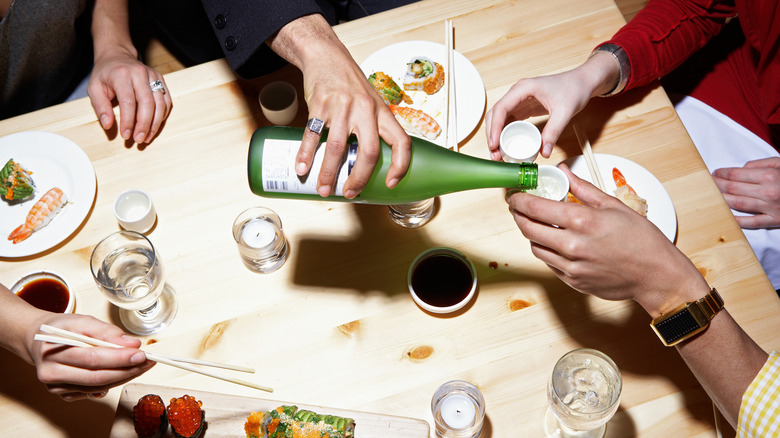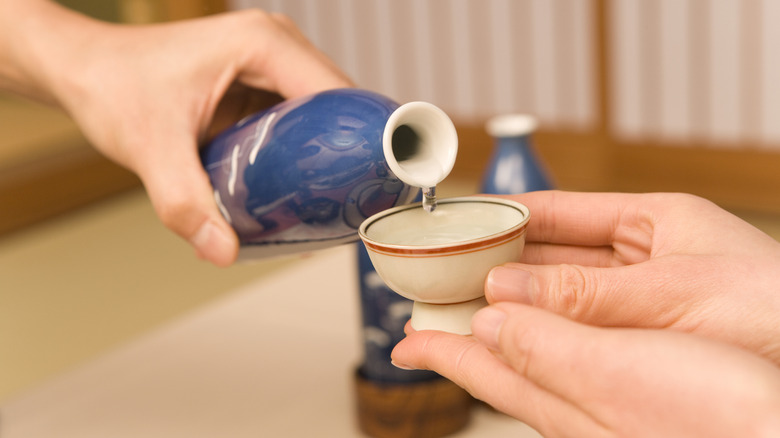The Surprising Etiquette Mistake You'll Want To Avoid When Drinking In Japan
Japan is a country with rich traditions and cultures dating back centuries. Some of these customs can be quite surprising, like Japan's unexpected food and drink customs that locals side-eye tourists for breaking. However, just like the one etiquette rule you should never break when visiting Japan, these traditions should be respected if you want to immerse yourself in the culture and connect with the people on a deeper, more respectful level. This includes an unspoken rule about PDA in Japan — and extends to wetting your whistle with sake, also known as Japanese rice wine.
There is one important rule when it comes to sake etiquette in Japan that many travelers don't follow: Never pour your own drink. Serving yourself sake is seen as a rude gesture and a sign of poor hospitality. Even in informal settings, it can be viewed negatively by your drinking companions. Japanese people even have a word for it: Tejaku.
Others at the table will pour sake for you, and you're expected to top them up when their cups are empty. If you're drinking with older people or in a more formal setting, following this custom is especially important to avoid causing offense.This act for pouring for others is called oshaku and it's thought to help people connect with their companions on a more social level while drinking. The tradition is rooted in Shinto practices and should be upheld. While the etiquette may be relaxed in some situations, it's best to let a local, host, or an elder take the lead and follow their example.
Other important sake etiquette to follow
While oshaku may be the most widely observed sake etiquette, it isn't the only one to keep in mind. There are several customs you can follow to show respect for Japanese traditions. When receiving sake from someone else, it's customary to lift your cup with both hands — your right hand holding the side of the cup, and your left supporting the base. The same applies when pouring sake from the bottle, known as tokkuri: Use both hands, with one supporting the neck and the other supporting the base.
When pouring sake for someone, stop before their cup is full and never pour to the rim. Once someone has poured for you, it's considered polite to take a sip before placing your cup back on the table. Speaking of sipping, sake shouldn't be consumed like a shot of tequila — a common misconception. Sipping shows that you are savoringthe aromas and flavors. There are also rules of etiquette concerning the tokkuri, such as not peeking into or drinking straight from the bottle. As with wine, you should never mix different sakes, as it can distort the flavor and overall experience.
Finally, a key rule of sake etiquette revolves around toasting. A toast typically happens once everyone's cup is full, and you say kampai instead of cheers. In more formal settings, your host usually leads the toast. Now, while many of these rules may not always be strictly followed, depending on the people and setting, it's wise to observe them at first, and adjust if others become more relaxed. At the very least, these customs offer a meaningful way to immerse yourself in Japanese drinking culture.

